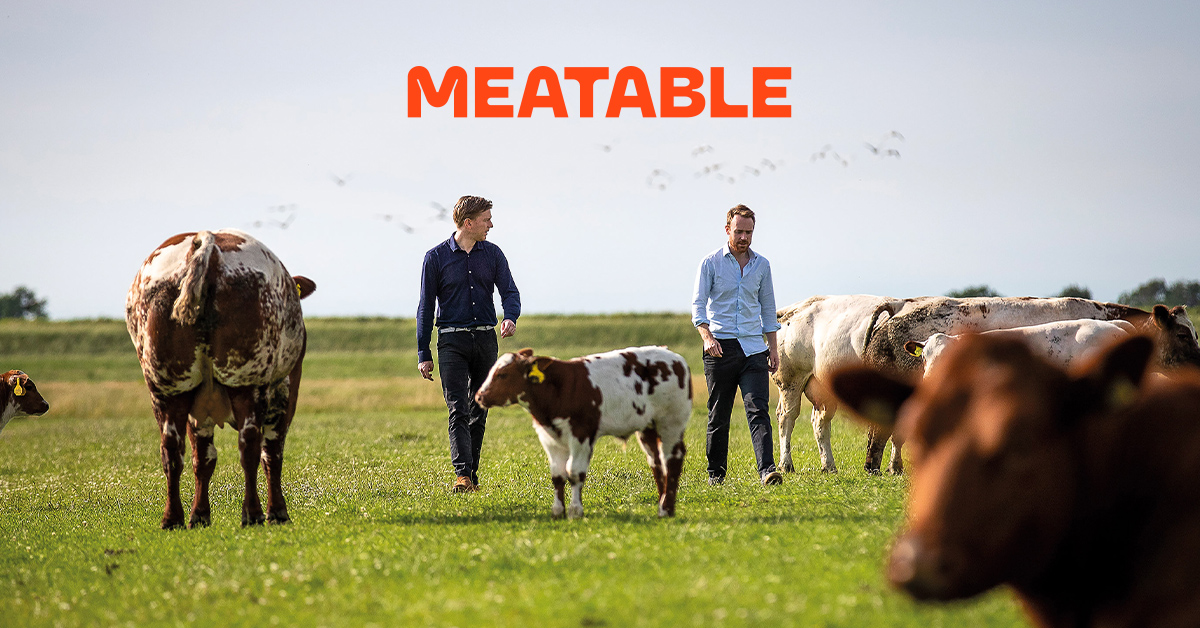Cultured Protein Maker Taps Beef Industry Vet, Eyes Supplier Role

Dutch food technology company Meatable announced it has appointed beef industry veteran Jeff Tripician to lead the cell-cultured beef and pork business on a new path as a sustainable protein supplier.
As Meatable CEO, Tripician will use his over 25 years of experience working in the meat industry to guide the food tech company into its next stage of growth as a partner to established meat industry stakeholders.
“I’m a pretty grizzled guy,” said Tripician, referencing his time at Niman Ranch, Perdue Farms (which acquired Niman in 2015) and, most recently, establishing Grass Fed Foods as part of the merger of Teton Waters Ranch and SunFed Ranch. “When Meatable called to ask if I would like to talk about cultivated meats, I said, ‘I don’t even know what that is.’”
The Meatable team went on to explain its vision for remaking the meat industry using novel cellular agriculture technology. The company’s leadership asked Tripician if he could turn it into a meat business.
“[Meatable] said, ‘We’re really run by scientists and biotech people, and we’d like to have someone that knows the meat industry,’” he said.
Tripician accepted the role so that he can position the Netherlands-based company as a “supplier and a vendor to every meat company in the world that is interested in beef and pork.”
This is a different approach than that taken by many other cultured meat companies. GOOD Meat and UPSIDE Foods have spent the last year attempting to scale their branded cultured chicken products in fine-dining restaurants in the U.S. and in the retail market of Singapore.
Meatable’s asset-light strategy will be a cost-effective way for the industry to grow where it can work as an ingredient or equipment supplier that licenses its technology. Cultured products will scale quicker with the resources and infrastructure of larger meat and food makers like Tyson, JBS, Cargill, Conagra or Hormel, Tripician said.

In this model, Tripician suspects many meat companies would be willing to incorporate cultured products into their supply chain as part of licensing deals as opposed to acquiring or competing with food tech companies.
“They all have production facilities. They’ll be more efficient than we will be in running it. They’ll run it their way and put it into their system.”
Meatable might be the right partner for this. It is one of the few cultured meat companies to raise a sizable investment in the recent past, landing $35 million in August 2023. The company also announced in March that its process could transform cells into sausages in just four days.
From Tripician’s perspective, this strategy will also address one problem behind much of the regulatory and legislative pushback that the cultured meat industry has faced: disenfranchising ranchers and farmers.
In a perfect world, Meatable will set an example for how the cultured meat industry can grow in tandem with more sustainable animal agriculture practices. Cell-grown products will be incorporated into the meat, poultry and seafood supply chain and supplement what makes it to retail shelves.
In fact, it is a similar approach to the blended products that many large meatpacking companies have already been testing in the market; albeit those versions incorporated mushrooms or plant-based ingredients, not a cell-grown protein.
This approach makes sense for someone like Tripician who has worked with ranchers and cattlemen for decades. It’s a win-win for the meat industry across the supply chain, he said.
Major meat companies could supplement their current raw material with these products and have a better case for labeling the products as environmentally sustainable. Cultured meat tech companies could devote more resources to efficiently scaling the innovation, and ranchers could still raise animals without stressing the land.
Most major meat companies don’t raise the majority of animals they make food products from. Commodity meat is raised by ranchers and farmers and bought after it is slaughtered (or harvested). Much of the harvested animal parts — bones, organs, off-cuts and less desirable pieces — are seen as waste with little to no value.
Whereas, a cultured meat product could be produced for exactly what is needed for the retail market, Tripician said, without the time and land-use resources that go into growing a whole animal.
“If you’re in the meat business, you should look at this and say: This is just a new vendor for raw material,” he said. “We’ll be a percent of every pound, so to speak. Not a replacement for any pound.”
A number of startup cellular agriculture companies in the last few years are positioned as suppliers that are solely focused on one element of the cultured meat industry, be it in scaffolding, bioreactor construction, isolating cell-lines or other cogs in the complex supply chain of the developing a lab-grown protein.
The strategy is all the more inviting considering the difficult funding environment, where cultured protein companies took in $226 million in new investment in 2023, compared to $922 million in 2022.

















